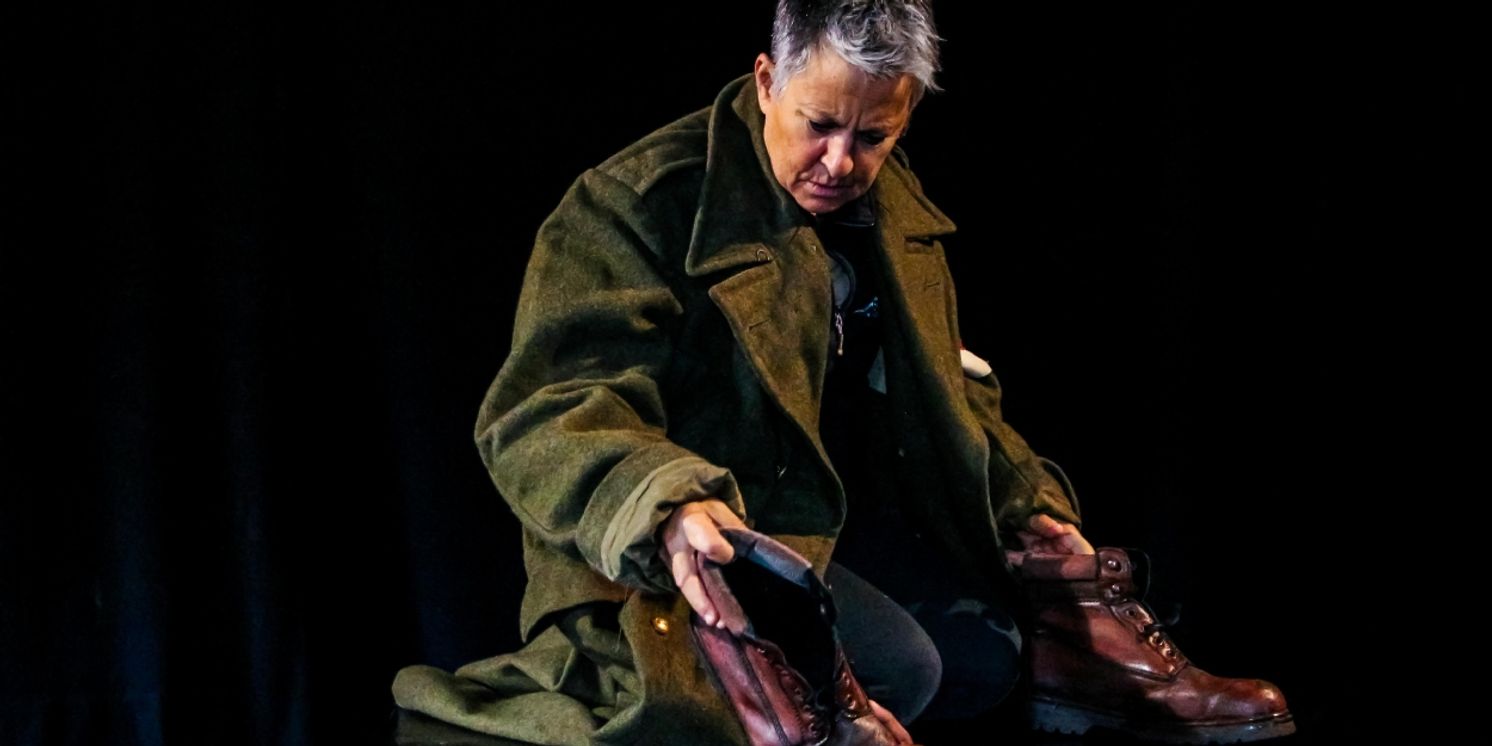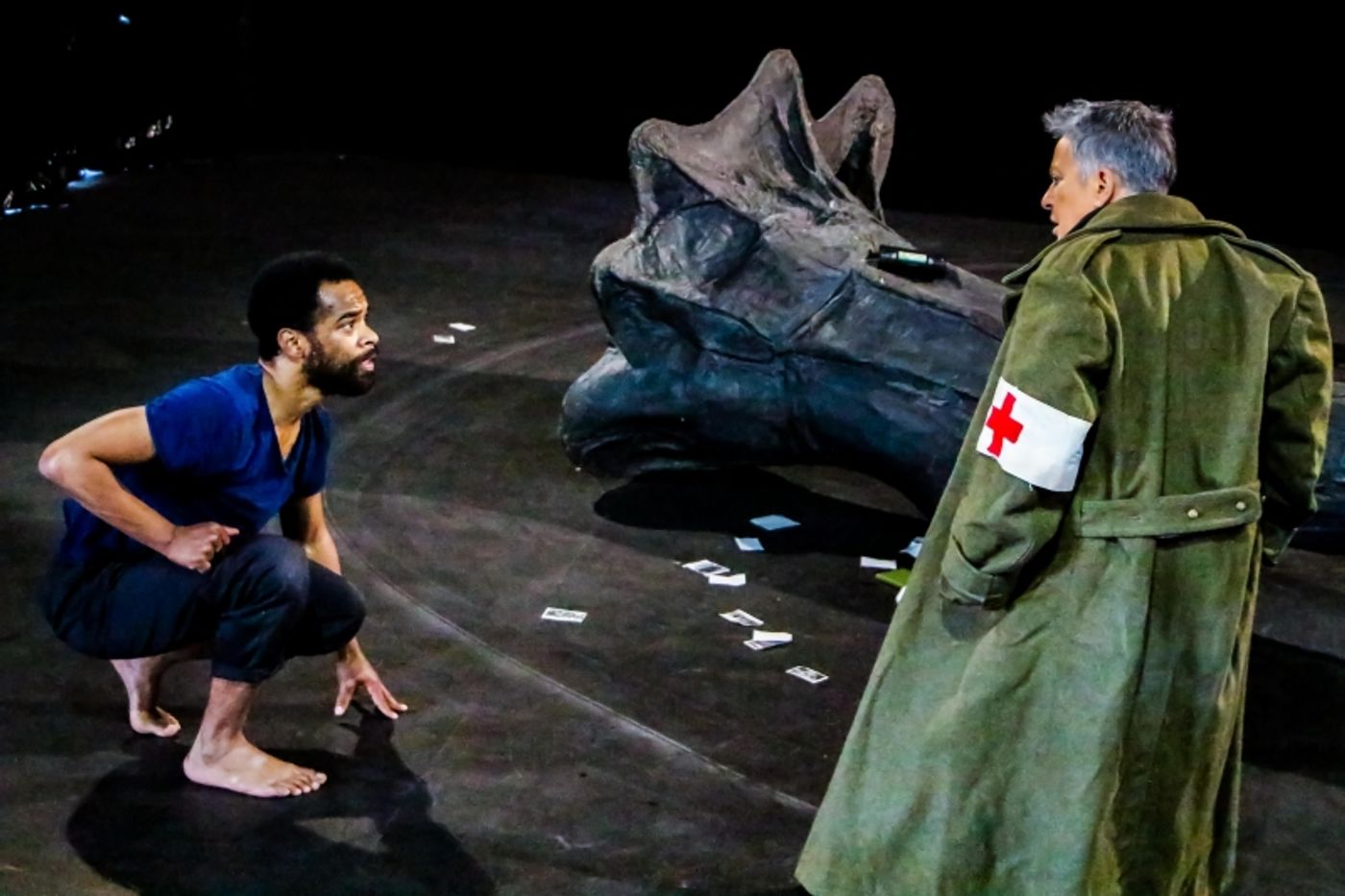Interview: Mark Fleishman Talks About Bringing SNAPPED Back to the Stage
SNAPPED is on at the Magnet Theatre 6-23 September


SNAPPED is set to return to the stage in September this year. The play was first conceived of and staged under lockdown in 2021. We spoke to director Mark Fleishman about bringing this play back to life.
BWW: Let’s start off with – how does it feel to be returning with SNAPPED? It debuted under heavy lockdown restrictions in 2021. Things must be quite different this time around.
Mark: Things are different now. But when you redo a show, it never quite feels the same as when you did it for the first time. When you rework it, it feels less intense, less heavy in a way, and that lightness of touch means that the piece comes together almost on its own, in a kind of surprising way. I don't mean to say that the actors don't put in a lot of work to remake the show, but from the directorial point of view it really feels less fraught than when you did it for the first time. Doing a show under COVID restrictions after such a long time of theatres being shut down, was a very strange, complicated and intense experience. Now we are so busy doing so many different things that the work just happens. A simpler way of saying all of that is that it's very nice to be back making theatre without the often-absurd complications and complexities of a global pandemic.
BWW: This is such a personal piece for Jennie Reznek, dealing with grief around the
death of her father. How do you approach that as someone so personally involved and as a director as well?
Mark: I suppose from the perspective of working with Jennie the actress who also happens to be my life partner, this show is part of a long series of works in which we have worked together, and so we have very well - developed strategies to distance ourselves from each other in the process, thereby making it possible to maintain our own roles and responsibilities as if we are working together on a purely professional basis without any personal element being present at all. But from the perspective of the content of the show, of course Jennie’s grief impacts me on a personal level, particularly because it is an extended form of grief which has lasted for a long time. And then the subject of that grief is my father-in-law which means that I have a personal relationship to him separate from Jennie's relationship, so I suppose it also engages my own kind of grieving. And yet the nature of the material, and his creativity through the photographs that make up such a big part of the show, also elevates the overriding sense of emotion or grief and allows one to see it and feel it in a different way. So I suppose the art aspect of it creates its own kind of distancing.
BWW: On the more technical side of the show – this piece uses multimedia, original
music, dance. How do you go about pulling all of these aspects together - what is your starting point for the staging and then the layering?
Mark: Right from the very beginning we knew this was going to be a show that brought together photography, live performance, projection, video, lighting and sound in quite complex and sophisticated ways. There was a great deal of experimentation and trial and error playing on the floor which led to the choices. The work was made during the months of lockdown so there was a lot of pre-planning and a lot of time to think through the complexities and find possible solutions. Then we were able to have a number of short experimental workshops in which those ideas were tested. We were very well prepared for the show because of the time and the testing that had gone on. But a lot of work goes into, as you say, layering the different elements on top of each other which is what I see as my particular contribution to the work, the ways in which different elements speak to each other and produce their own kind of rhythmic and musical relationships and journeys and progressions through the piece. It is about shaping the bodies in the space, the lights on those bodies, the sound, into one coherent whole which produces a kind of visual and atmospheric effect which I think carries the audience along in a way that's not only about understanding what is being said or what is textual, but produces its own kind of texturing in the space. I only really know how to make things work when I see them and experience them and feel them in the space, so the great advantage of having our own Magnet Theatre space at our disposal for long periods of time, with all the technical facilities that that affords, is that we can actually do the testing, see what works, feel the effect of the particular choices we're making. We don’t have to guess what's going to happen and then hope that it will materialize in the way you thought it would when you have a very short get-in in a commercial theatre.

BWW: There’s a dual nature to the play – the story of a woman grieving the loss of her father, and the story of a man whose body never made it home, for various reasons. Can you expand on both these significant concepts and story arcs. How do you approach this duality to give them both the care they deserve without it feeling like two stories in one play.
Mark: From a dramaturgical perspective, I feel that these two-story arcs are both very personal, very emotional and that can be a trap or can produce pitfalls where the audience feels uncomfortable, as if they are trespassing on somebody''s personal emotional space. My solution to that is, and has always been, to try to place those personal narratives into relationship with some kind of container, some kind of ready-made container that can shape, hold and, to some extent, distance them from the individual, personal space. In this case it was using Virgil’s Inferno and particularly the one sequence of that poem – the descent into hell - as a kind of structuring device, but also as a kind of holding device for the personal narratives and story arcs. So that immediately allowed us to feel that we were not sinking only into personal feeling but that we were shaping and creating based on aesthetics that came from an already produced work of art, which was the Dante text, and the images of that text and that in some way I think cushions the audience from those pitfalls or traps that I was mentioning earlier.
BWW: Is there anything else you’d like to tell us about the piece – what message you want to get across, what you want audiences to go away with?
Mark: I think there are lots of things that the audience responds to in this work. Of course, there is the content itself, the story about protracted grief, the difficulty of letting go, the way in which we build up images of the people we love in our lives that are often obstacles to being able to cope with moments of transition, of passing. There's also the historical question about African combatants in the Second World War and the way they were treated. The ways in which the conditions of apartheid played themselves out in a foreign space, even when people had volunteered to put their lives at risk for the country. And the fact that so many people didn't come back and even those that came back possibly suffered the consequences of their experiences in the war for such a long time and that had an impact on their families. So that story is also there for the audience. But I think beyond that there's also the experience of the beauty of art and of the theatre to take people on a journey away from the known, away from their own realities into a space and experience of feeling and atmosphere that is just transformative on some level. The thematics around light and the way that light forms images through photography becomes a kind of metaphor for an experience which is quite uplifting about the human experience, so I think there's lots of different ways in which the audience might be transported by the piece. And our experience of those audiences at the Baxter at the end of COVID was certainly that they found the work transporting and illuminating in many ways.
The show runs to 85 minutes and will be performed at Magnet Theatre, corner Lower Main & St Michael’s Roads in Observatory nightly from 6 to 22 September at 7pm, with matinees on Saturday 9, 16 and 23 September at 2:30pm. Tickets cost R120 and R80 for scholars, students and pensioners, all via Webtickets. For further info please call the Magnet office on 021 448 3436.
Photo credit: Phakamani Waka
Videos

